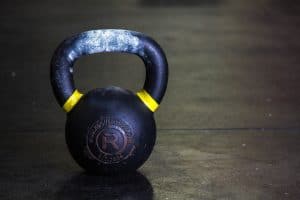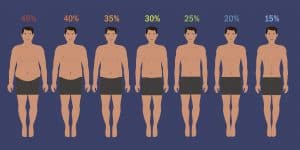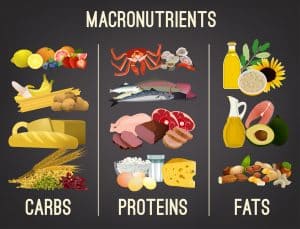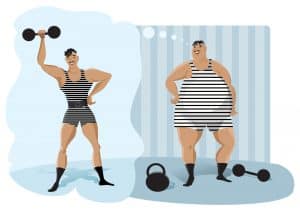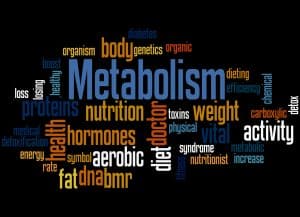It depends!
But not as much as you might think.
It is very common to see lifters workout hard while messing up their diet.
Thinking that intense exercise gives them a license to eat junk.
They hop on the scale thinking they dropped the extra pounds…
The scale has not moved!
Or worse … Went up by a couple of pounds.
So how many calories does the workout exactly burn?
We went to the lab and did some computations.
And found some very interesting numbers that we will share with you in this post.
BMR Vs TDEE.
For the purpose of addressing the question, we will need to use the BMR and TDEE calculators.
Basal Metabolic Rate (BMR): Is the number of daily calories the body needs to perform basic physiological functions and stay alive. It is a function of age, weight, and height only.
This number will represent the baseline of our computations.
Total Daily Energy Expenditure (TDEE): Is the number of daily calories the body needs to maintain the same body mass (or weight). This number is a function of the BMR and the physical activities.
This number difference between TDEE ad BMR (TDEE – BMR) will represent the number of calories workout burns.
As an experiment, we examine the role of workout from sedentary to extremely active, while holding all other parameters fixed.
- Age: 25
- Hight: 5’ 7”
- Gender: Male
- Weight: 170 pound
How many calories does a workout burn?
By workout, I mean regular weightlifting sessions of 45 – 90 min long. In addition, hard manual labor, cardio, and training frequency would also count.
Let’s define the activity levels as follows:
- Sedentary: Little or no exercise.
- Light activity: light exercise 1-3 days/week.
- Moderately activity: moderate exercise 3-5 days/week.
- Intense activity: intense exercise 6-7 days a week.
- Extreme activity: very hard exercise and a physical job or twice a day workout.
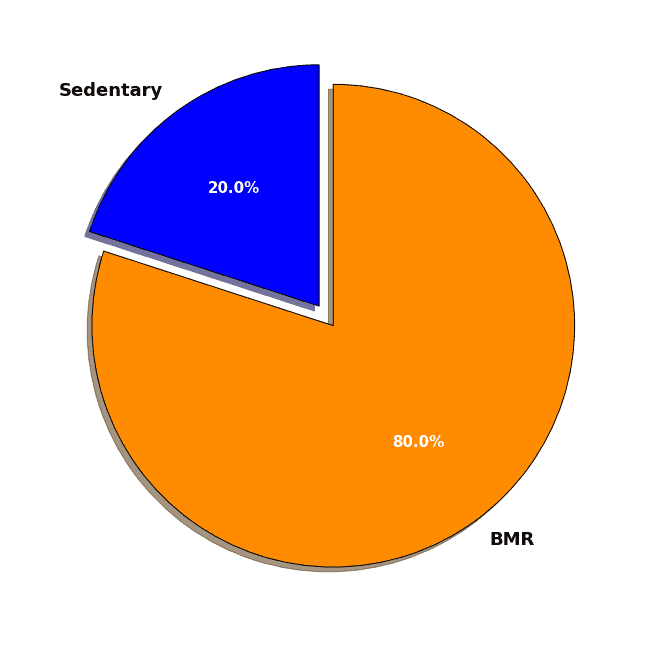
Being inactive burns about 20% of the total calories you need. The other 80% are used for physiological functions.
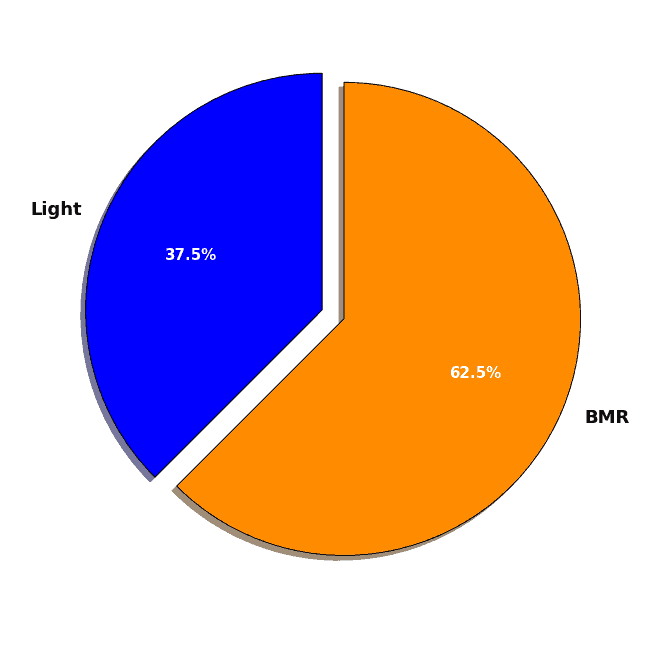
Doing very light exercises burns about 37.5% of the total calories you need. The other 62.5% are used for physiological functions.
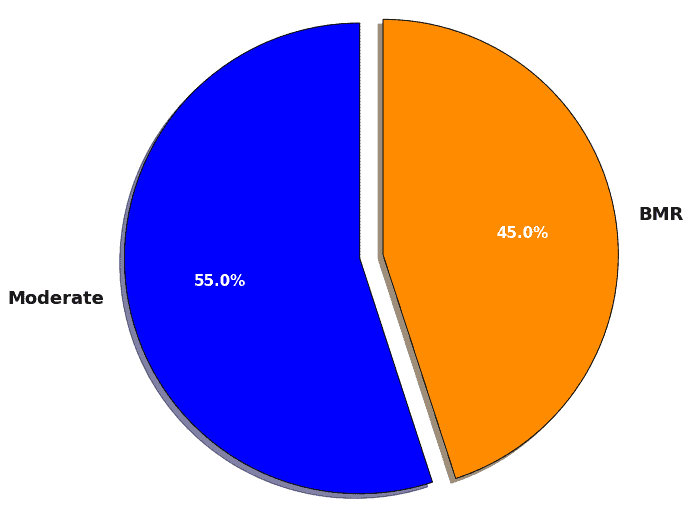
Doing moderate weightlifting exercises burns about a little over half of the total calories you need. The other half are used for physiological functions.
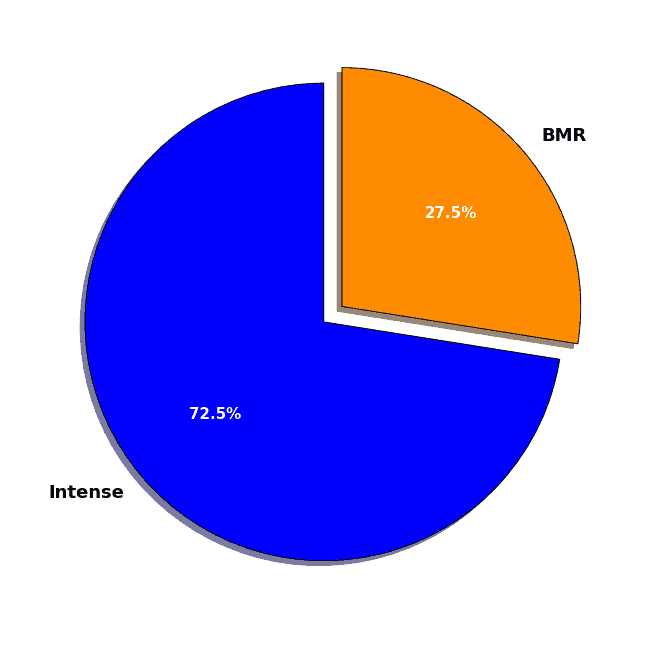
Intense weightlifting exercises burn over 70% of the total calories you need to maintain your body mass. The rest is used for physiological functions.
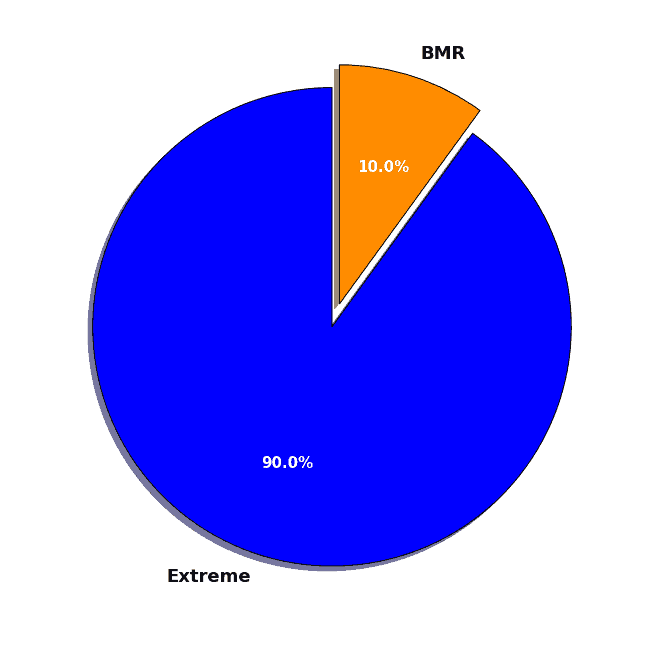
Extreme weightlifting and cardio exercises burn 90% of the total calories you need to maintain your body mass. Only 10% is used for physiological functions.
Workout Calories burned as a function of Age
In this section, we examine the number of calories the workout burns as a function of age.
For this matter, we pick five different ages:
25, 35, 45, 55, and 65.
All other parameters remain fixed:
- Weight: 170 pounds
- Height: 5’ 7”
- Gender: Male
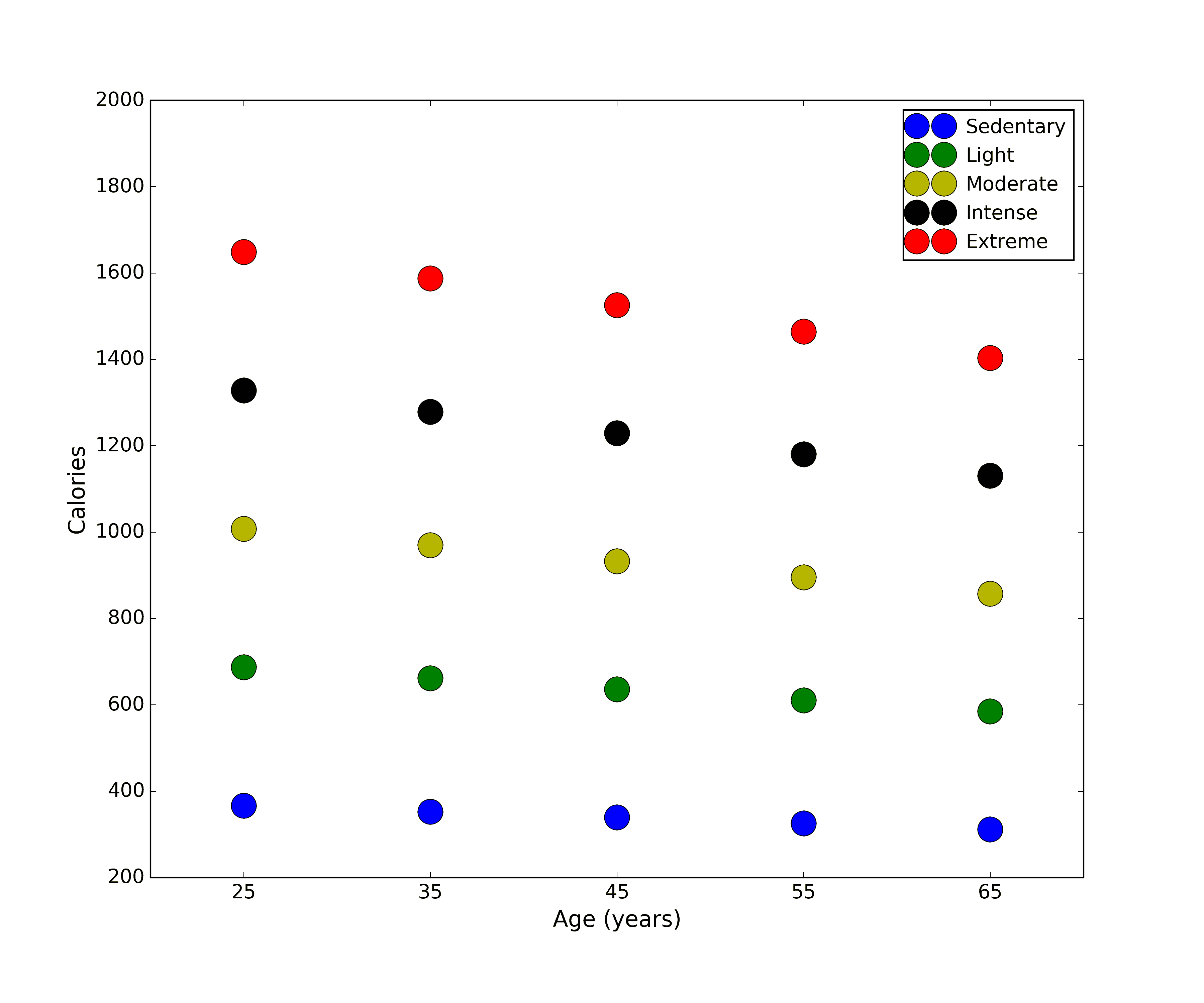
We can see that age has a minimal impact on the number of calories the workout burns.
For example, over 40 years (from 25 to 65) doing the exact extreme workout burns only 245 fewer calories at 65 of age than at 25!
Workout Calories burned as a function of body weight
In this section, we examine the effect of body weight (fat) has on the amount of burned calories by the workout.
We choose 10 different body weights ranging from 160 to 250 pounds by an increment of 10 pounds.
That’s 160, 170, 180, 190, 200, 210, 220, 230, 240, and 250.
All other parameters are held fixed.
- Age: 25
- Height: 5’ 7”
- Gender: Male
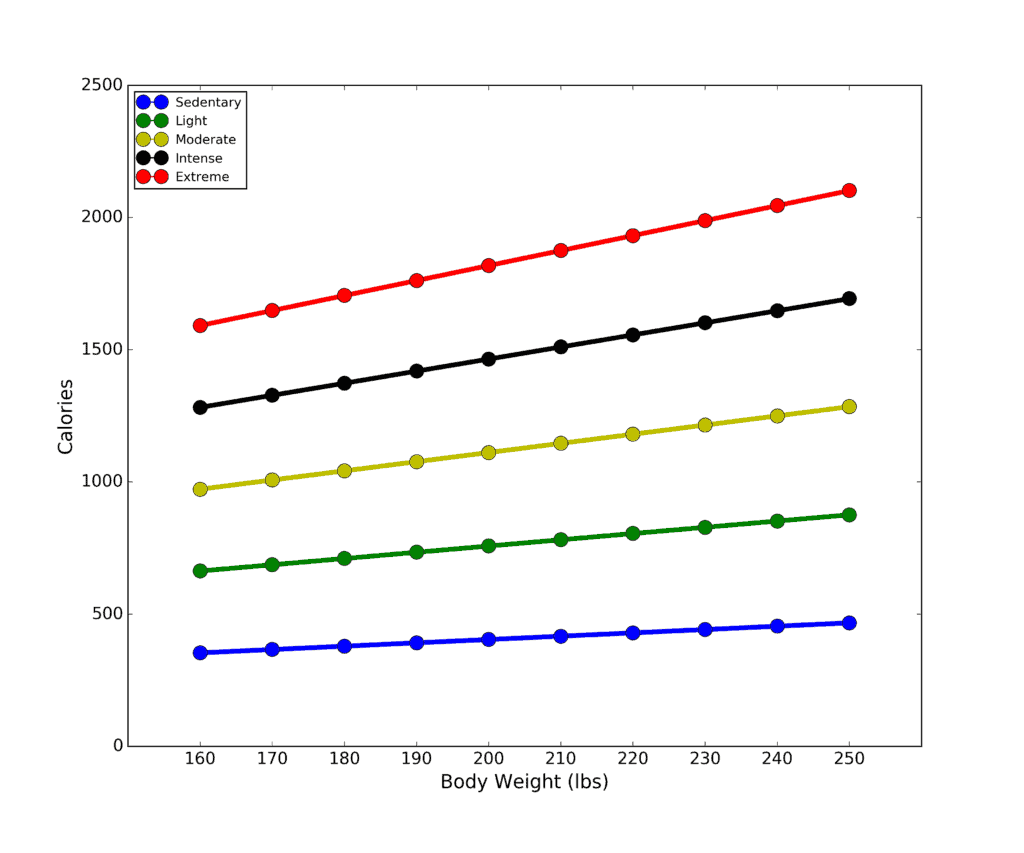
This is an interesting result.
The heavier you are, the more calories the workout burns!
In addition, the number of calories burned by the same workout increases more at a heavier weight.
For example, a person who is at 250 pounds burns more calories going from sedentary to intense or extreme than a person who is at 170 pounds and going to the same exact intensity!
So, at 170 pounds, a low activity workout would burn around 366 calories. An extreme workout would burn around 1648 calories. That’s a 1,282 calorie difference.
At 250 pounds, a low activity workout burns 467 calories, and an extreme workout would burn 2102 calories. A difference of 1635! Or about 353 extra calories.
Really interesting!
Workout Calories burned as a function of Gender
Finally, we examine the role of gender on the number of calories a workout burns.
We fix all other parameters.
- Age: 25
- Height: 5’ 7”
- Weight: 170 pounds.
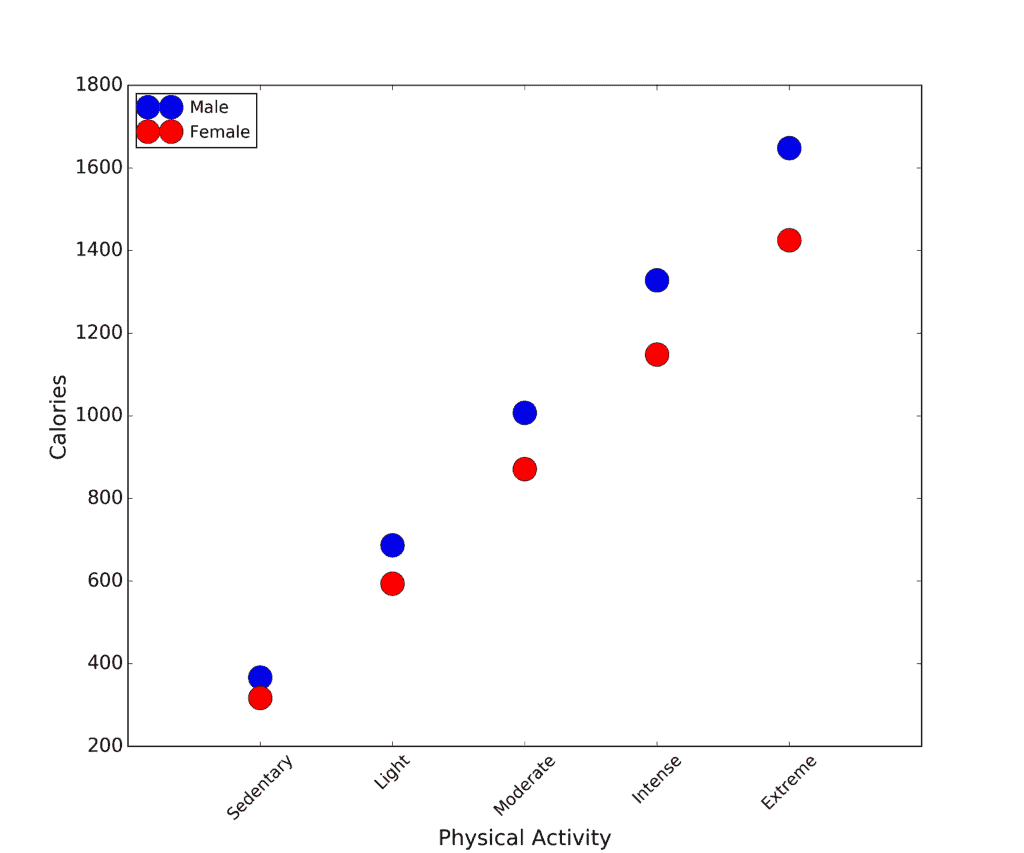
Given the same amount of physical activities for both men and women:
Males burn more calories than females given the same workout activity.
The percentage ranges from 13% to 21% over a large range of body weights. This is why it’s harder to lose stubborn body fat for women than men.
The Takeaway
The number of calories weightlifting exercises burn depends on many internal and external factors (hormone levels, age, height, weight, gender, and intensity of exercises).
We conclude the following results:
1- Exercise intensity constitutes a significant amount of the total daily calories needed to maintain the same body weight. 2- Age plays little to no role in the number of calories a workout burns. 3- Body fat (and body weight) play the biggest role in the number of calories a workout burns. The heavier someone is the more calories they burn doing the same exact exercises. 4- Males burn 13% - 21% more calories doing the same exact exercises with the same intensity as females.



